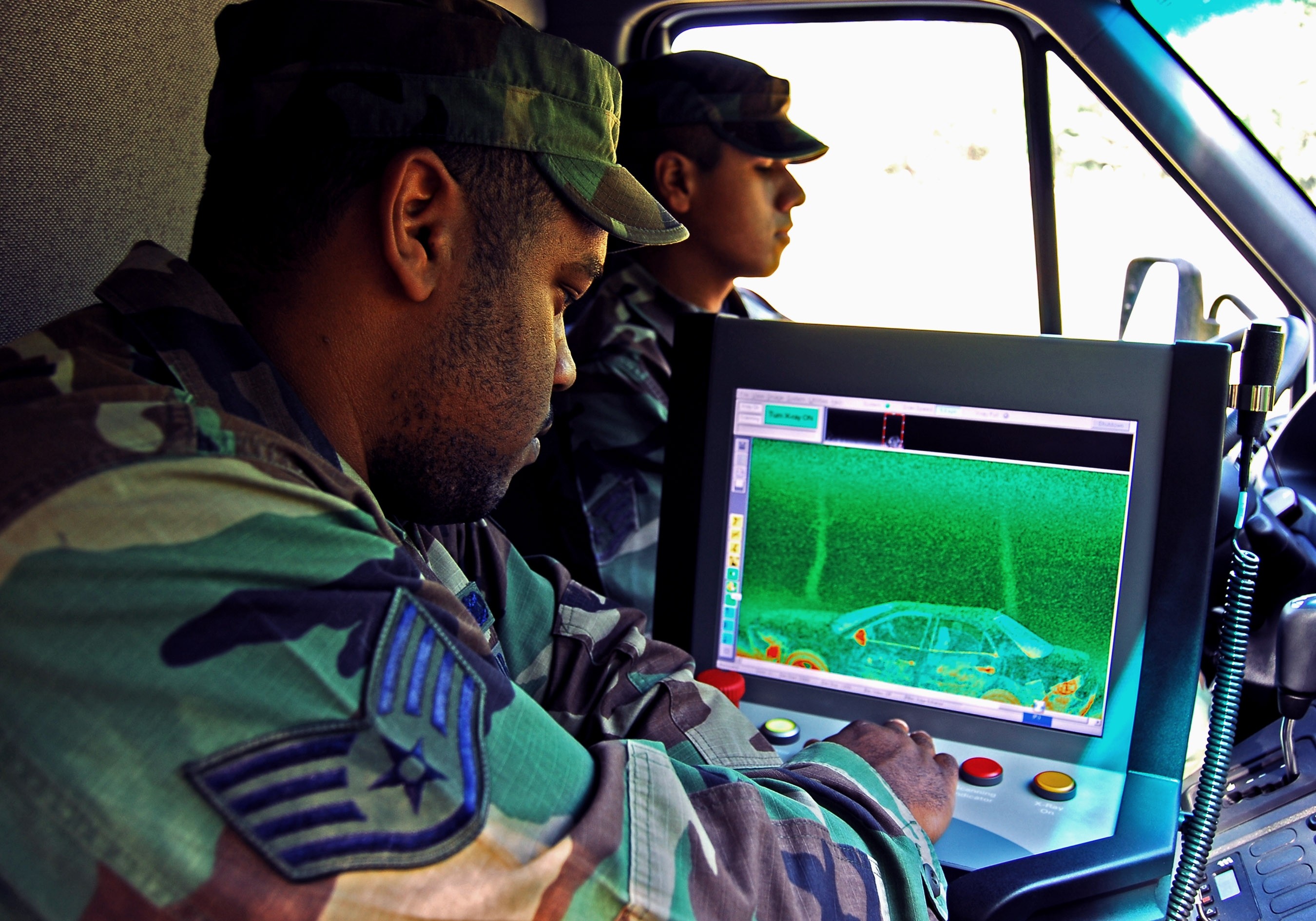
MOODY AIR FORCE BASE, Ga. - Members of the 820th Security Forces Group here are set to employ a new high-technology search system in the war on terrorism that will help increase base security that also can deter acts of aggression against coalition forces.
Known as the Z backscatter van, the $1.2 million, 13,000-pound, lead-lined delivery truck uses low-power X-rays to detect the presence of radiological or low-density organic materials like explosives or drugs hidden inside metal structures, said Staff Sgt. Jonathan Hobbs, an 820th SFG sensors technician.
The group currently owns two of the vehicles. One van is configured for stateside use with mandatory "X-ray on" and "scanning" marked strobe lights. The other van does not have any beacons installed for more covert use at deployed locations.
"There is also a personnel scanning mode that can be used to instantly detect the presence of weapons or small amounts of explosives that might not be located during a pat-down search," Sergeant Hobbs said.
At this time, the personnel scanning mode is not authorized for use in the United States, pending the results of a Federal Aviation Administration study.
As it drives past a target at a continuous speed, the ZBV uses a rotating pencil-shaped beam of low-level X-ray radiation and a large array of backscatter detectors to create its images, Sergeant Hobbs said.
"As we drive past a target or it drives or walks past us, the computer knows exactly where the beam is at any given point and is able to assemble a series of slices into a detailed picture we can view from the sensor display in the truck's cab," he said.
If organic material is inside the vehicle, such as a detonation cord or a cache of drugs tucked inside a wheel well or door panel, it will appear as an anomaly on the scanner and the security team will target that vehicle for further inspection, said Tech. Sgt. John DeLaCerda, the 820th SFG sensors and advanced technologies NCO in charge.
The ZBV has a number of advantages over more traditional search methods, Sergeant DeLaCerda said. Since the system is installed in an unmarked common European van chassis, it can be used to covertly inspect a suspect vehicle without the occupants ever being aware of a search.
"We can intercept a suspect vehicle that has been flagged by security and inspect it before it becomes a threat," he said. "After its initial warm up, the vehicle is ready to respond and instantly put itself into a position that provides base defenders with the most critical intelligence."
It is also safer for the search team, Sergeant DeLaCerda said. The van's sensors can be operated hundreds of meters away via a fiber-optic link. This way, sensor operators can now scan the same suspect vehicle for improvised explosive devices without having to sit right beside it.
In addition to being safer for the operators, the technology is much less harmful than traditional X-ray methods for people and objects being scanned. The power levels used in the ZBV system are significantly lower than common X-ray technology, Sergeant Hobbs said.
"A traditional X-ray needs to have enough power to punch through an object and expose media on the far side," he said. "That can often be a huge amount of energy in order to penetrate the thick steel walls of a vehicle or a cargo shipping container."
A backscatter system uses much lower levels of energy, and uses a single pencil-sized X-ray beam moving at very high speeds. It only needs to shine the beam onto an object for an instant, the sergeant said.
"It's called a backscatter system because the sensors listen for variations in reflected energy off of an object, and that tells the computer not only how dense the materials are, but also what compounds it is made of," he said.
A typical medical diagnostic X-ray will expose a person to between five and 100 millirems of radiation. A person scanned by the ZBV would receive only about .010 millirems of radiation, Sergeant Hobbs said.
Recently one of the 820th SFG's two ZBV vans deployed to search vehicles for explosives and contraband during the airshow at Eglin Air Force Base, Fla. This mission highlighted a common role the system will perform in future deployments, Sergeant DeLaCerda said.
"In a single pass, one sensor operator and one driver were able to examine a row of cars that was 250-feet long," Sergeant DeLaCerda said. "The vehicle performed flawlessly and is clearly a force multiplier for the Air Force and the 820th SFG. We are now able to inspect vehicles and people faster, safer and more effectively than ever before."

Social Sharing